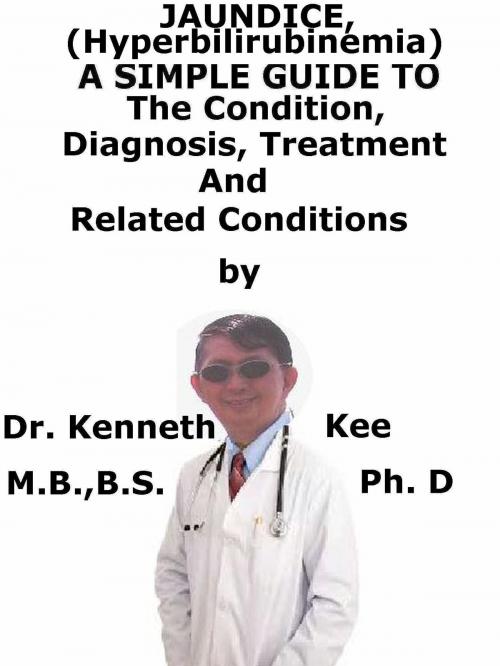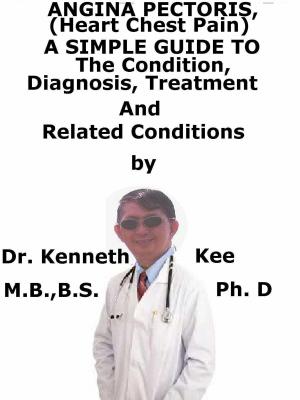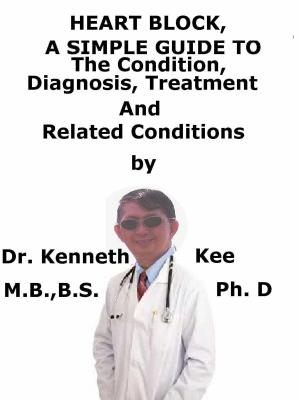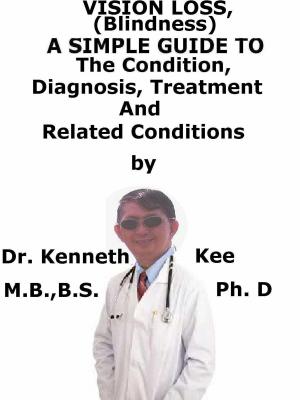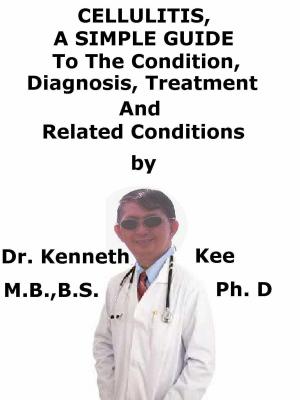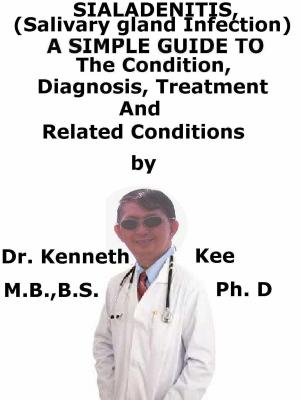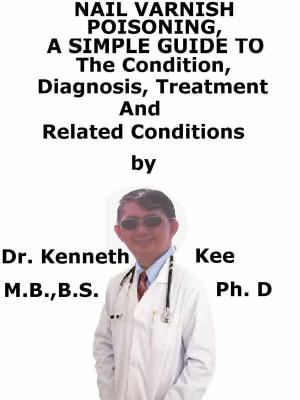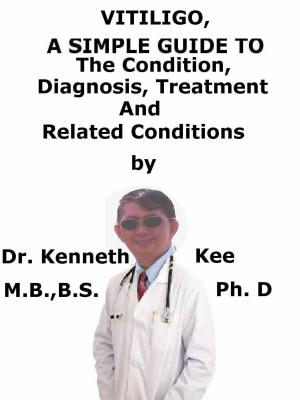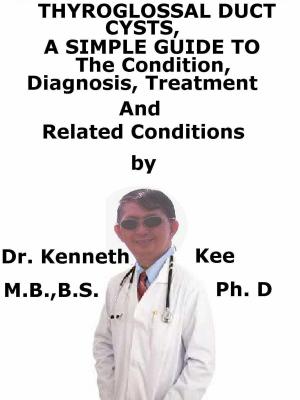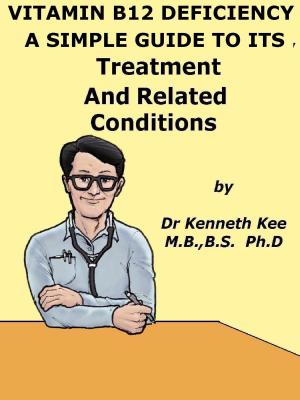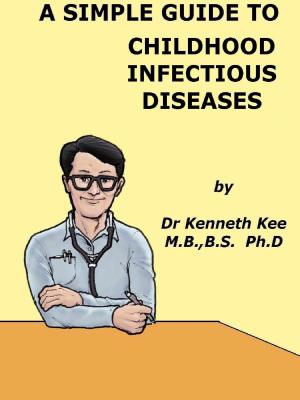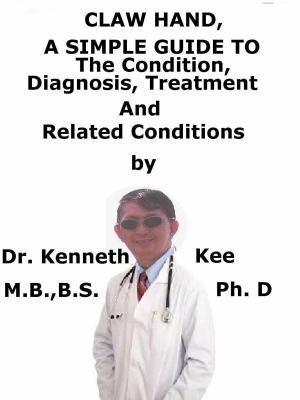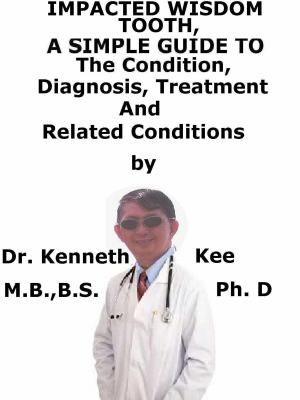Jaundice, (Hyperbilirubinemia) A Simple Guide To The Condition, Diagnosis, Treatment And Related Conditions
Nonfiction, Health & Well Being, Medical, Specialties, Internal Medicine, Hematology, Health, Ailments & Diseases, Abdominal| Author: | Kenneth Kee | ISBN: | 9781370084586 |
| Publisher: | Kenneth Kee | Publication: | May 24, 2017 |
| Imprint: | Smashwords Edition | Language: | English |
| Author: | Kenneth Kee |
| ISBN: | 9781370084586 |
| Publisher: | Kenneth Kee |
| Publication: | May 24, 2017 |
| Imprint: | Smashwords Edition |
| Language: | English |
Jaundice is the yellow color of the skin, mucus membranes, or eyes.
The yellow coloring occurs from by the excessive accumulation in the tissues of bilirubin, a byproduct of old red blood cells.
The normal serum bilirubin is about 3-20 μmol/L.
Jaundice is not normally obvious until serum bilirubin is over 35 μmol/L.
Jaundice can be a symptom of many health disorders.
The detection and differential diagnosis of jaundice are essential in medical evaluation.
The types of bilirubin are:
1. Un-conjugated bilirubin which is toxic, fat soluble and cannot be excreted by the kidneys
2. Conjugated bilirubin which the hepatocytes in the liver has conjugated the un-conjugated bilirubin and excretes in the bile.
Conjugated bilirubin is water soluble and in high levels is also excreted in the urine as dark tea colored urine.
Bilirubin is created from the breakdown of hemoglobin in the reticuloendothelial system.
95% of the circulating bilirubin is un-conjugated and attached to albumin.
The bilirubin-albumin complex is broken down by hepatocytes allowing free albumin to circulate.
Jaundice can happen if:
1. Too many red blood cells are dying or breaking down and going to the liver
2. The liver is overloaded or injured
3. The bilirubin from the liver is not able to properly move into the digestive tract
Jaundice is often a sign of a disorder with the liver, gallbladder, or pancreas.
The causes of jaundice are:
1. Hemolytic anemia is due to the break up of red blood cells
Here the major form of bile pigment is un-conjugated
2. Hepato-cellular or liver causes:
Acute liver causes are:
a. Viral hepatitis A to F,
b. Alcoholism,
c. Toxic chemical hepatitis including drugs and
d. Bacterial infections such as leptospirosis.
More of conjugated bilirubin at early stages is followed by un-conjugated bilirubin.
Chronic liver causes are:
a. Chronic liver cirrhosis – produces mostly un-conjugated bilirubin
3. Obstructive jaundice: mainly conjugated bilirubin accumulates
a. Intra-hepatic cholestasis due to drug sensitivity
b. Extra-hepatic gallstones, carcinoma of biliary systems or adjacent organs.
Disorders that can cause jaundice are:
1. Infections
2. Use of certain drugs
3. Cancer
4. Blood disorders,
5. Gallstones,
6. Birth defects and
7. A number of other medical disorders resulting in jaundice.
The effects of jaundice are:
1. Yellowing of the skin and white of eye and mucous membranes like inside of the lips
2. Liver enlargement and palpable gallbladder in blockage
3. Enlarged spleen especially in hemolytic anemia
4. Dark colored urine due to presence of bilirubin in the urine
5. Pale stools
6. Prolonged tiredness from anemia, loss of blood,
7. Encephalopathy from bilirubin affecting the brain
8. Nausea and vomiting.
9. Poor appetite
Jaundice is not the same as carotenaemia (where the sclera remains white).
Jaundice will be obvious if the total bilirubin is >35 μmol/L.
In jaundice, the important rapid differentiation of the main causes (hepatitis, biliary stasis, hemolysis, resolution of hematoma or congenital causes) can often be obtained by doing:
Urinary bilirubin and urobilinogen
Hepatitis serology should be done in all patients with cholestasis, as distinguishing hepatitis from extra-hepatic obstructive causes may be very difficult.
Liver function tests
Serum antinuclear antibodies (ANAs), anti-smooth muscle antibody (ASMA)
MRCP may become the test of choice in obstructive jaundice
Liver biopsy
Treatment will depend on the diagnosis and cause of the jaundice in each individual case
a. Blood transfusion or platelet transfusion for hemolytic anemia
b. Treatment of infections
c. Surgery for obstructive lesions
Others:
a. Rest
b. Fluids
c. Vitamin B
TABLE OF CONTENT
Introduction
Chapter 1 Jaundice
Chapter 2 Causes
Chapter 3 Symptoms
Chapter 4 Diagnosis
Chapter 5 Treatment
Chapter 6 Prognosis
Chapter 7 Liver Cirrhosis
Chapter 8 Hepatitis B
Epilogue
Jaundice is the yellow color of the skin, mucus membranes, or eyes.
The yellow coloring occurs from by the excessive accumulation in the tissues of bilirubin, a byproduct of old red blood cells.
The normal serum bilirubin is about 3-20 μmol/L.
Jaundice is not normally obvious until serum bilirubin is over 35 μmol/L.
Jaundice can be a symptom of many health disorders.
The detection and differential diagnosis of jaundice are essential in medical evaluation.
The types of bilirubin are:
1. Un-conjugated bilirubin which is toxic, fat soluble and cannot be excreted by the kidneys
2. Conjugated bilirubin which the hepatocytes in the liver has conjugated the un-conjugated bilirubin and excretes in the bile.
Conjugated bilirubin is water soluble and in high levels is also excreted in the urine as dark tea colored urine.
Bilirubin is created from the breakdown of hemoglobin in the reticuloendothelial system.
95% of the circulating bilirubin is un-conjugated and attached to albumin.
The bilirubin-albumin complex is broken down by hepatocytes allowing free albumin to circulate.
Jaundice can happen if:
1. Too many red blood cells are dying or breaking down and going to the liver
2. The liver is overloaded or injured
3. The bilirubin from the liver is not able to properly move into the digestive tract
Jaundice is often a sign of a disorder with the liver, gallbladder, or pancreas.
The causes of jaundice are:
1. Hemolytic anemia is due to the break up of red blood cells
Here the major form of bile pigment is un-conjugated
2. Hepato-cellular or liver causes:
Acute liver causes are:
a. Viral hepatitis A to F,
b. Alcoholism,
c. Toxic chemical hepatitis including drugs and
d. Bacterial infections such as leptospirosis.
More of conjugated bilirubin at early stages is followed by un-conjugated bilirubin.
Chronic liver causes are:
a. Chronic liver cirrhosis – produces mostly un-conjugated bilirubin
3. Obstructive jaundice: mainly conjugated bilirubin accumulates
a. Intra-hepatic cholestasis due to drug sensitivity
b. Extra-hepatic gallstones, carcinoma of biliary systems or adjacent organs.
Disorders that can cause jaundice are:
1. Infections
2. Use of certain drugs
3. Cancer
4. Blood disorders,
5. Gallstones,
6. Birth defects and
7. A number of other medical disorders resulting in jaundice.
The effects of jaundice are:
1. Yellowing of the skin and white of eye and mucous membranes like inside of the lips
2. Liver enlargement and palpable gallbladder in blockage
3. Enlarged spleen especially in hemolytic anemia
4. Dark colored urine due to presence of bilirubin in the urine
5. Pale stools
6. Prolonged tiredness from anemia, loss of blood,
7. Encephalopathy from bilirubin affecting the brain
8. Nausea and vomiting.
9. Poor appetite
Jaundice is not the same as carotenaemia (where the sclera remains white).
Jaundice will be obvious if the total bilirubin is >35 μmol/L.
In jaundice, the important rapid differentiation of the main causes (hepatitis, biliary stasis, hemolysis, resolution of hematoma or congenital causes) can often be obtained by doing:
Urinary bilirubin and urobilinogen
Hepatitis serology should be done in all patients with cholestasis, as distinguishing hepatitis from extra-hepatic obstructive causes may be very difficult.
Liver function tests
Serum antinuclear antibodies (ANAs), anti-smooth muscle antibody (ASMA)
MRCP may become the test of choice in obstructive jaundice
Liver biopsy
Treatment will depend on the diagnosis and cause of the jaundice in each individual case
a. Blood transfusion or platelet transfusion for hemolytic anemia
b. Treatment of infections
c. Surgery for obstructive lesions
Others:
a. Rest
b. Fluids
c. Vitamin B
TABLE OF CONTENT
Introduction
Chapter 1 Jaundice
Chapter 2 Causes
Chapter 3 Symptoms
Chapter 4 Diagnosis
Chapter 5 Treatment
Chapter 6 Prognosis
Chapter 7 Liver Cirrhosis
Chapter 8 Hepatitis B
Epilogue
